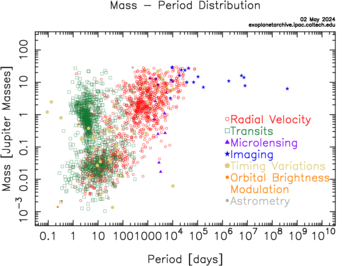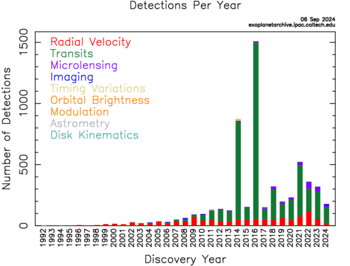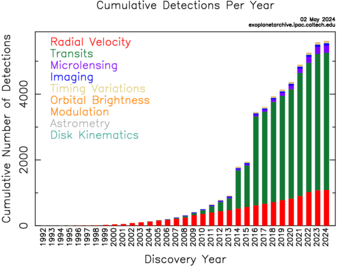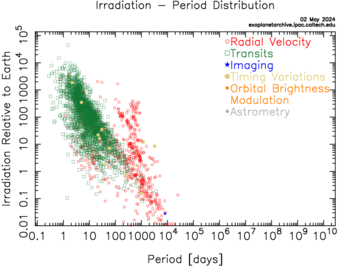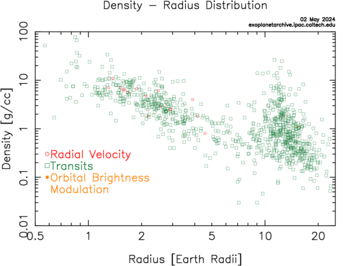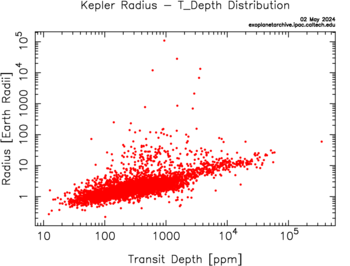Exoplanet Plots
The plots on this page planets are grouped by discovery method. Additional details about the plots may be found in the About These Plots section of this page and on our Frequently Asked Questions (FAQ) page. If you use any of these plots in your presentation materials, please acknowledge the NASA Exoplanet Archive.
To make your own plots with Exoplanet Archive data, use our Planetary Systems Plotting Tool.
Skip to a Section:
Confirmed Planets
Kepler Candidates
Download Movies of Plots
We've made some short movies using our plots for use in presentations:
- KOI Radius vs. Period illustrates the progress of Kepler discoveries over time through October 2016.
- 33 Years of Discoveries shows the number of exoplanet discoveries in mass-period space from 1989 through April 2022.
- Exoplanets: Cumulative Detections by Discovery Year is a histogram showing the cumulative number of exoplanet discoveries by detection method each year from 1989 through April 2022.
f you have a suggestion for a new movie or pre-generated plot, please submit a Helpdesk ticket.
About These Plots
These pre-generated plots are produced daily, using available data within the NASA Exoplanet Archive, to ensure they are as current as possible. This purpose of these plots is to provide the community fast access to presentation material that describe the current state of the exoplanets field in terms of their number and our understanding of their orbital and physical characteristics. The values plotted are those listed in the Planetary Systems interactive table.
In these plots, planets are grouped by discovery method. "Timing Variations" includes planets discovered by transit timing variations, eclipse timing variations, pulsar timing variations, and pulsation timing variations. In all pre-generated plots, points are only shown for confirmed planets with all of the required parameters measured.
Filtergraph
Filtergraph is an online data visualization tool developed at Vanderbilt University through the Vanderbilt Initiative in Data-intensive Astrophysics and the Frist Center for Autism and Innovation.

